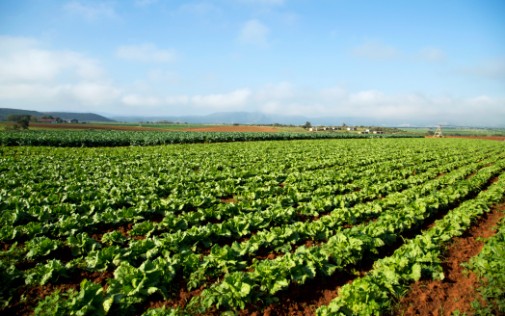Organic crops higher in antioxidants than non-organic

Organic foods have been a trending topic over the last couple years, but do they really have more health benefits than conventionally grown crops? A new study by Newcastle University (NU) in the United Kingdom compared 343 studies around organic and conventionally grown fruit, vegetables, and cereals.
The study was published in the British Journal of Nutrition and compared the differences between organic and conventionally grown food and its nutritional value. Research concluded that organically grown food contained a staggering 60 percent more antioxidants. Organic food is also four times less likely to have pesticide residue, and also have extremely lower levels of toxic heavy metal cadmium, research says.
Study leader Professor Carlo Leifert of ecological agriculture at NU, says that their findings are “overwhelming” and that organic crops contain antioxidants that are equivalent to one to two extra portions of fruits and vegetables.
Organic crops also contain less metal contaminants such as cadmium. The contaminant levels are 50 percent lower for food grown organically.
However, what qualifies as an “organic” product? According to research, organic growers are not able to protect crops with synthetic chemicals or use mineral fertilizers to help prevent pesticide contamination in groundwater. Michelle Remkus, dietician at Advocate Good Samartitan Health and Wellness Center, says that buying organic means you are purchasing foods that do not use synthetic pesticides and chemical fertilizers.
“Food claiming to be organic must be free of artificial food additives and are usually made with fewer artificial methods such as chemical ripening, food irradiation, and genetically modified ingredients,” Remkus says. “In addition, the food must be made of 95 percent organic ingredients.”
That being said, it is recommended to give organic fertilizers, such as manure, to richen the nitrogen in the soil by rotating legume crops, research says. The study also says that non-chemical protection methods such as crop rotation, weeding, and biological pest control are key when it comes to growing organically.
However, there may be a downside to buying organic such as the price. Remkus says that there are two deterrents that people face when buying vegetables. “So how do consumers stay within their budget, but still eat organic? That’s when the ‘Dirty Dozen and Clean Fifteen’ come into play,” she said. “Fruits and veggies that contain higher of pesticides are termed the ‘Dirty Dozen.’ The ‘Clean Fifteen,’ on the other hand, are 15 fruits and veggies that are lower in pesticides and are usually fine to buy non-organic.”
Related Posts
Comments
4 Comments
About the Author
health enews staff is a group of experienced writers from our Advocate Health Care and Aurora Health Care sites, which also includes freelance or intern writers.


















another example that you should research the food your eating.
I try and eat organic produce whenever possible. The “dirty dozen” and “clean fifteen” guidelines help me know what I should make sure to buy organic and what is more optional.
I find it amazing that the mainstream nutritionists and allopathic medicine practitioners took so long to come up with this. Alternative medical and scientific studies have been telling us this for at least 20 years! That is how long my partner and I have been eating organic whenever possible even though it is a bit more expensive – it’s worth it.
For those of us who do not know, it would have been nice to have listed the Dirty Dozen and Clean Fifteen!